While most visitors to Tahiti head for the romance centres of Bora Bora and Moorea, i was in search of sharks and that meant two possible destinations: Rongiroa and a remoter, less well known atoll – (in order not to make this location public to potential fishermen, I am not disclosing the exact location). On this trip i chose the latter – it is a little wilder and reportedly has greater shark numbers.
Despite its honeymoon status, Tahiti has surprisingly few international flight connections: your choice is either Los Angeles or Australia/NZ. So from Hong Kong, i took an overnight flight to Auckland; spent the day in a motel there and then took an evening flight to Papetee, the capital of Tahiti. This flight (5 hours)arrived at the pleasent hour of 2.45am. Hence another overnight stay was required before i could take a lunchtime flight to my chosen destination.
In Tahiti you have two choices of accomodation: outrageously priced five star hotels/resorts or more modestly priced and much better value “pensions”. These are typically small, chalet style accomodations.
My choice of pension on the atoll was situated right on the beach overlooking a stunning lagoon. While it was hot at night (no fan or aircon) and lacked hot water, these were minor inconveniences as the room was large and clean, the location great and the food outstanding.
One aspect of Tahiti that first time vistors may have overlooked: it is extremely French. From the baguettes & croissants at breakfast to the extremely limited English spoken by all inhabitants including westerners, you could be foregiven for thinking that you were deep in Provence were it not for the coconut palms, talcum powder sand and turquoise waters. So if you have issues with the French, this may not be the destination for you.
To be fair, most of the people i met were perfectly hospitable and most importantly of all, you have to give the French a lot of credit for protecting the environment and especially the marine environment so well.
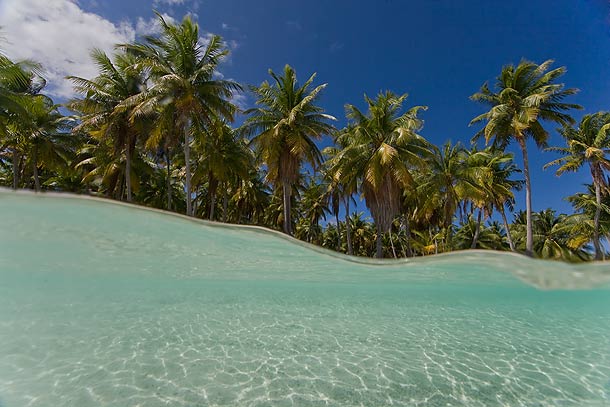
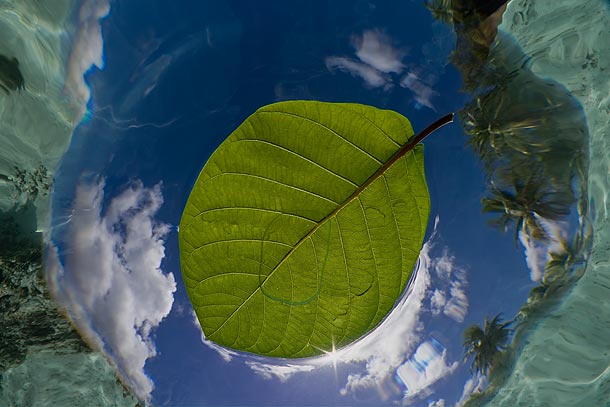
The atoll is a protected biosphere Reserve and proof of the effectiveness of this status can quickly be seen in its extremely healthy shark population. It is extremely rare nowadays to find shark numbers of the kind that you will encounter in the atoll’s two passes.
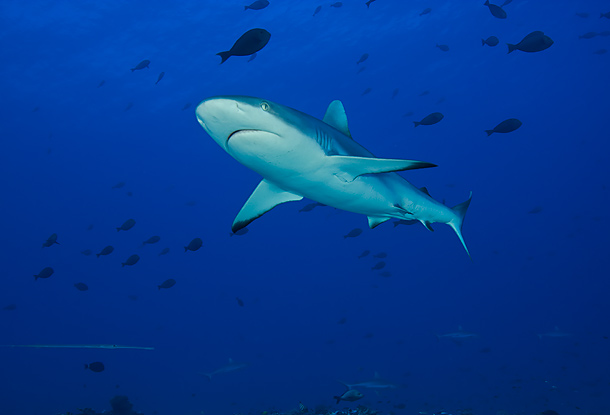
The atoll comprises a circular atoll which surrounds a large lagoon. The atoll is 60km in length but no more than a few hundred meters wide and maximum elevation is only a few meters – so like so many Pacific atolls, it might not be around in 50 years. The lagoon covers an area of more than 1,000km meaning that once you get any sort of distance out from the beach, it feels like you are in open ocean especially when the trade winds blow and white caps start appearing.
While there is some decent snorkling to be had off the beach, there are only two places to dive in the atoll – at its two passes. As these are a long way apart, the location of your accomodation and dive operator will determine where you dive. As much of the accomodation is located around one of the passes, most of the diving takes place at this pass. However, the dive operators will usually make a once a week excursion to the other pass. This pass is not to be missed and if i returned, i would base myself at one of the few pensions located near to this pass. What this more remote pass lacks in variety vs the other one, it more than makes up for in the form of its spectacular shark population. And as it turned out, i was incredibly lucky in the timing of my one day visit to the more remote pass.
Every year, for just one day, coinciding with a full moon, the mother of all fish spawnings takes place – this one involving a species of grouper known as the Camouflage Grouper.
I had vaguely been aware of this event but never expected to encounter it. When i did, it took me a while to process what i was witnessing, for as far as the eye could see, and visibility was excellent save for the milky clouds of fish spawn in certain areas, there were thousands upon thousands of gropers.
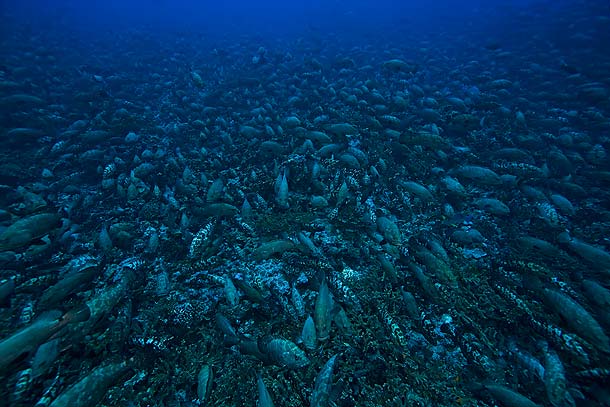
But what made the scene even more amazing were the legions of sharks cruising among the gropers. At the beginning of the first dive i saw several gropers taken by sharks but as the actual act of catching would happen so quickly and haphazardly, it was impossible to capture on camera. Still, in close to 2,000 dives, this was surely the most spectacular underwater wildlife event that i had witnessed.
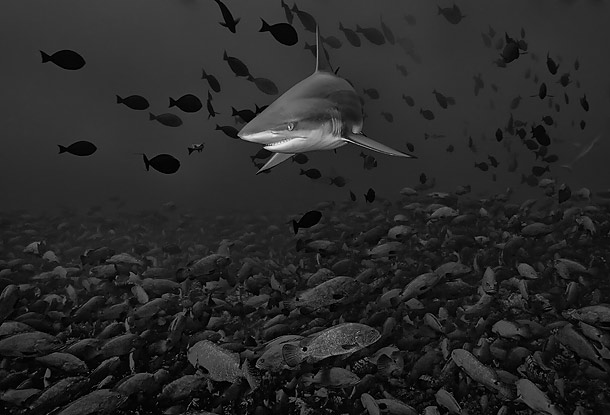
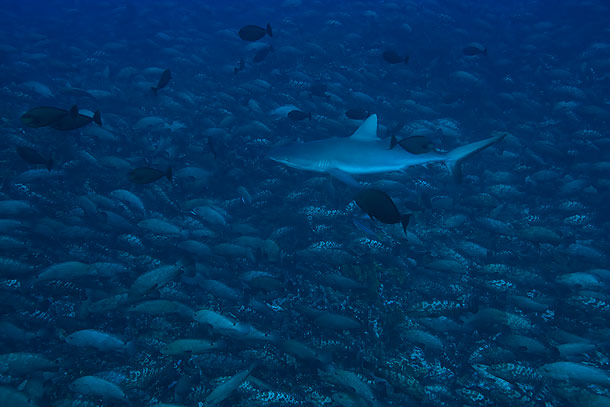
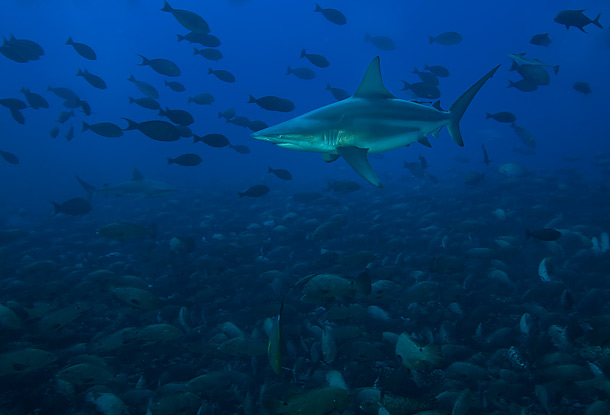
The dives at the remoter pass, as with most of the diving in the atoll, comprises drift diving. After we had left the Groupers (which were at 25-20m), we drifted back along the famous “wall of sharks” where we were greeted by hundreds of sharks coming in the other direction (ie towards us). It is not just grey reef sharks that you will encounter: silver tips, lemon, grey nurse and a shark the locals refer to as “ze big nose shark” (more commonly known as the Pointed Nose shark), are all seen and if you are lucky, the occasional tiger or hammerhead.
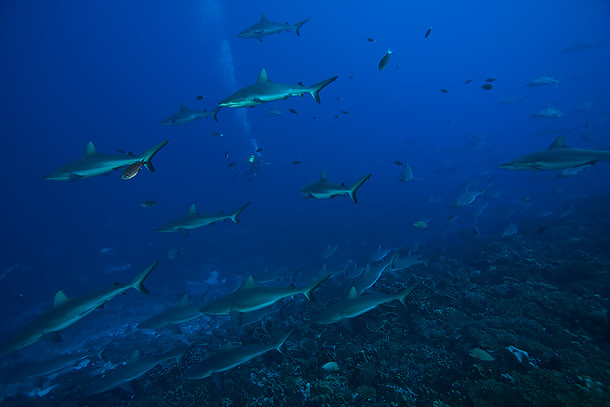
The dive ends with a shore exit at a beautiful cove, fronted by a small beach. In the shallows, Black Tip Reef sharks and surprisingly, several good sized Napoleon Wrasses cruise, all of which are relatively tame, due to regular hand feeding by local fishermen.
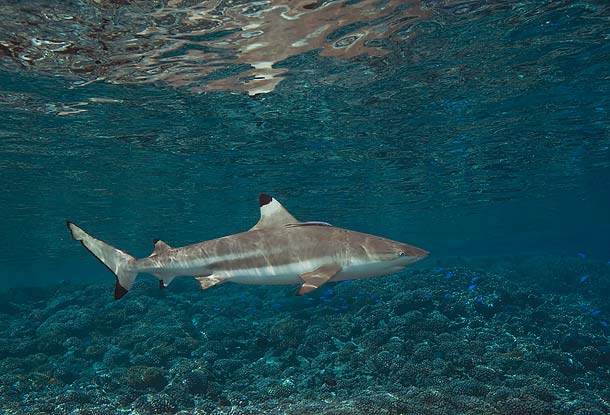
After a one hour surface interval, we were back in the water for a second dive. The Groupers were still all there but the spawning activity had ceased and the shark numbers among the fish had diminished and no predation witnessed. As i was outfitted with my 16-35mm zoom lens (an excellent shark lens), I regretted not having my 15mm fisheye or 14mm lens which would have better captured the immense size of the spawning mass. I also feel i could have done a better job with exposures and composition, but this tends to nearly always be the case underwater when you encounter something rare.
On subsequent days, i dived the other, more accessible pass. One is restricted to two dives a day because dives can only be made on incoming currents. After the excitement of the remoter pass, some of the dive sites at the other pass seemed a little anti-climactic but i did encounter sharks in good numbers, saw three manta rays spinning in circles (not quite close enough for pics) and had regular boat encounters with dolphins. In the afternoon, we regularly returned to a bowl shaped site at the end of a long canyon. This is another drift dive where you start off with sharks and then drift along a canyon which ends in a sandy patch where huge schools of fish reside. Of these, there is a particular large school of Yellowfin Goatfish.
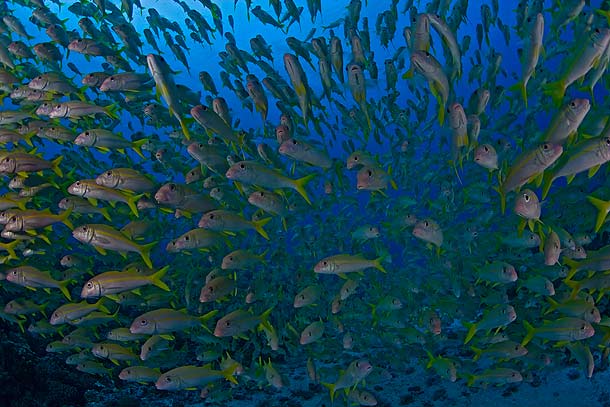
Clearly, the spawning Groupers made the trip but even without this, this atoll rates as a top dive dive destination mainly because of its huge shark population. One just hopes that the French continue to do the excellent job they have been in protecting the place. It will only take one Taiwanese or PRC long liner to come into the passes under the cover of night to decimate the place.
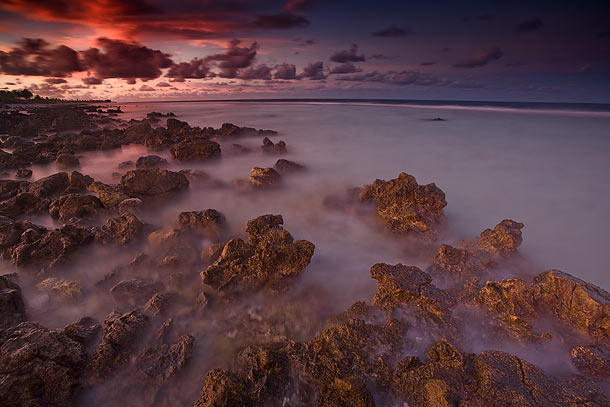
On my way back from Tahiti, i made a brief stop in the northern Tongan island of Haapai. The goal here was to try and snorkle with Humpback whales which migrate from their summer feeding grounds in the Antartica to give birth to their calves in the warmer, calmer waters of the South Pacific. Humpback whales can be seen in several locations in this wide area, but Tonga is one of the few locations where you can legally snorkle with them, albeit under strict supervision.
Historically, the more northern isle of Vava’u has been the place to go but this has become overrun with operators resulting in a ridiculous outcome where boats now queue to offload snorklers into the water. Haapai has just one operator.
Normally the whales arrive in June and stay until October but this year they have been exceptionally late. As a result, while i enjoyed my days out on the operator’s catamaran looking for whales, i only had one in-water encounter.
However, although it was brief (around 90 seconds), the whale approached very close (intially there were two) and it was a truely amazing, humbling experience. As testament to this, one of the other four snorklers broke down in tears on the boat afterwards. Being the macho guy that i am, no tears were shed by yours truely, but i do admit to briefly forgetting to put my housed camera to my facemask in order to take pictures. I think i was stunned to see a creature of such immense size come so close to me. I did though get one decent shot. The sun rays are what really makes this picture, helped by water of incredible blueness.
Looks like i will have to return next year.
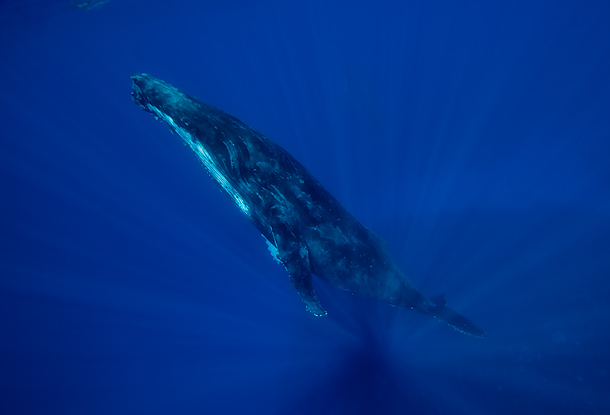
Parisot Frédéric
September 7, 2009
Paul, these pictures, and the website as a whole, are absolutely amazing. We have lost your email. Your pictures of Maisai Mara give us the envy to go there. Talk to you soon.
the Parisot Family